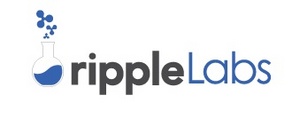XRP versus XLM
| Ripple XRP | Stellar Lumens XLM | |
| Market Capitalization | $50 billion | $8 billion |
| Total Coins supply | 103 billion | 100 billion |
| Algorithm | Ripple Consensus Algorithm | Stellar Consensus Protocol |
| Intended use | Faster and accountable transactions by banks | Secure contracts and financial inclusivity |
| Ideal Target User | Mass payments users | Individual users |
The world of cryptocurrency has absolutely exploded. 2017 was certainly a good year for the whole blockchain ecosystem, with many lay people starting to gain an understanding of what cryptocurrency and, by extension, blockchain is.
Just to set a good base here:
- Cryptocurrency refers to the alternative digital money that is based on the blockchain technology.
- Blockchain is a technology where transfers and transactions of everything on the chain are logged by all people/ devices connected to the item being transferred. That is an oversimplified explanation of the underlying technology, and a deeper explanation can be read here.
Up until 2016, many people had heard of Bitcoin and Ethereum as the only cryptocurrencies. But alternative coins have been around for a much longer time.
Thanks to the meteoric rise of Bitcoin as an investment option, and the subsequent mass media coverage, many people are beginning to understand what cryptocurrencies are. For many people-even those with a higher than average understanding of what crypto is- there is an uncertainty about the fate of all these currencies.
What is not in doubt though is that this is the beginning of a new era in accountability and transfer of money.
This is 1999 and the world is about to change.
The Setting
The story of Ripple and Stellar Lumens starts with the entry into fatherhood of a 32-year-old cryptographer Jeb McCaleb. An avid surfer with the coding skill comparable to legendary coder Alan Turing, Jeb set out to change the world of cryptocurrency, but through a unique approach. He needed to take care of his young family and in his mind, he could only do that through striking a massive mother lode of money.
Jeb intimately understood the inner workings of Bitcoin, almost like a butcher knows the insides of an abattoir. He knew where the flaws in Bitcoin lay, but more significantly he understood that without getting traded Bitcoin was never going to achieve true commercial success.
And that was when he cofounded MtGox, the world’s first Bitcoin exchange. Think of it as the Nasdaq of Bitcoin. MtGox later collapsed under a cloud, which is a story for another day.
From the experience of MtGox and an astonishing grasp of the blockchain technology behind Bitcoin, Jeb McCaled set out to make a better cryptocurrency. What he had in mind was something that would bridge the gap between the conventional money masters (banks and governments), and the decentralized cryptocurrency world. This was Bitcoins kryptonite; the missing link.
In 2011 Jeb McCaled assembled a team that would create what later came to be known as the Ripple Labs company, with their own coin called the Opencoin. Jeb is a gifted cryptographer with massive experience and clout within the community of hackers. He is a demigod of sorts, but he could not run this company, certainly not with the simultaneous responsibilities at MtGox.

The team that created Ripple labs included cofounder Arthur Britto who served as the Chief Strategist, David Schwartz who was the Chief Cryptographer, and Jesse Powell who was the money behind the operation. Chris Larsen, a gifted manager in the tech world, then came in as the CEO to complete the team.
Ripple Labs
Ripple Labs brought together personalities who would form what fintech refers to as a dream team. Highly gifted individuals serving their rightful capacities. The private life of Jeb McCaleb was suffering however. He ended separating from his wife and started seeing Joyce Kim.
Inevitably, Kim joined Ripple Labs and from there onwards it was the classic case of the powerful founder seeing a new member. Things got thick because of but not limited to Joyce Kim trying to be CEO and Jeb trying to eject Chris Larsen.
Jeb decided to exit Ripple Labs by selling it to Stripe. The deal was rumored to be around $14 million in cash, which would put the valuation of Ripple Labs at $140 million. The board was against the sale. The heated dispute between the CEO Chris Larsen and founder Jeb McCaleb escalated to a point where a vote was taken on whether Chris should be deposed as the CEO.
After votes were counted, only Jeb voted to depose Chris. Everyone else, including Jeb’s close friend Powell voted to retain Chris as the CEO of Ripple Labs. Jeb was angry and he left the campus and moved to Costa Rica, then Brazil. All along he held 12% ownership in the company and 9 billion XRP coins.
In late 2013 Jeb was looking to leave Ripple Labs completely. He gave up his position on the board and declared publicly that he would sell all his XRPs. That would mean he would flood the market with XRP coins. The move would not only drive the price of XRPs down, it would also send a message that there was something inherently flawed in the technology.
A founding partner dumping shares is always a danger sign. In stocks, it is illegal. But this was crypto. Jeb warned his ex-wife and close friends that he was about to dump coins. Finally, in March 2014 Jeb McCaleb left the company he founded, Ripple Labs, to start a new venture called Stellar.

The Fork
All of the source code that made the XRM blockchain was pen source. That means anyone can read, copy, or even modify that code as he or she wishes. Jeb had made it that way because he believes knowledge should be freely accessible to everyone who wants to have it.
It was the open source nature of the code that allowed Stellar Lumens to exist. Jeb McCaleb relied on the source code to develop the coin for the Stellar company; the Lumen (XLM). Stellar Lumens started out as a fork of the XRP.
Forks are changes to the underlying software such that the chain operates on a new set of rules, based on the old ones. A soft fork can be rolled back but a hard fork cannot. Jeb did a hard fork and used the new rules, inspired by the original rules, to create Stellar Lumens.
And Ripple Labs did not like it.
The Technology Wars
Summary:
- Stellar borrowed its initial code from Ripple, but later developed its own code.
- Ripple uses the Ripple Consensus Algorithm based on probabilistic voting by 80% of all nodes.
- Stellar uses the Stellar Consensus Algorithm based on consensus in 100% of all involved nodes, but not all nodes have to be involved. A user can choose certain trusted nodes to form his or her consensus slide.
- Ripple is more given to liveness while Stellar is more concerned with security.
Ripple Technologies did not like it when Stellar used their code as the basis for Stellar’s blockchain. This was in part due to the fact that Jeb had tried to wreck Ripple on his way out.
Stellar hired a Stanford professor of computer science, David Mazieres. It was the professor and his team at Stellar who finally developed the Stellar Lumen algorithm which is different from the Ripple algorithm. By 2015 Stellar was using a different system from Ripple.
Stellar runs on an algorithm called the Stellar Consensus Protocol (SCP). On the other hand, Ripple runs on a probabilistic voting algorithm.
The SCP is a decentralized algorithm. That means the system looks for agreements within the chain of events to determine the validity of a transaction. On a basic level, this means that the SCP will only authorize a transaction is there is agreement within the ledgers are consistent.
This is meant to create safety for transactions. Unless there is full confirmation of validity the transaction does not go through. The SCP is praised for its ability to arrest Byzantine failures. These are failures which occur as a result of nodes lying about the transactional details.
On a deeper level, the SCP determines whether a transaction is valid based on the consensus. Consensus mean that nodes are in agreement on the details of a transaction. The important point to not here is that consensus does not depend on all nodes being in full agreement. There are nodes that might be unavailable. However, if a majority of nodes agree then the nodes that were unreachable also agree to the final consensus the transaction goes through.

This creates a problem because even though a majority of nodes agreed in the first instance, the nodes that were unreachable have to be consulted before the transaction is published in all nodes as valid, and thereby entered into the ledger. That challenge is solved by use of what the SCP calls the consensus slices.
Consensus slices refers to trusted nodes which a party can decide to be validating its transactions through. When a party A trusts parties B and C, B and C become A’s consensus slice. That means A can transact much quicker.
The probabilistic voting system used by Ripple is almost similar to what Bitcoin uses. The system is at an 80% threshold. The implication here is that of 80% of the nodes agree that a transaction is valid then the technology is designed to allow that transaction to pass as verified. This allows for faster transaction but crucially it creates vulnerability to Byzantine failures.
With Stellar pursing security, the liveness of the currency is affected negatively. That means the speed at which transactions are made will be slower in case the process encounters a block on the way to consensus. On the other hand, Ripple pursues liveness.
The basic premise of what Ripple seeks to achieve is speedy transactions that meet the security threshold in 80% of all involved nodes. It has to be noted that while its 80% of nodes that meets the threshold, the accuracy if these nodes is in upwards of 98%. That means liveness here does not affect the security extensively, but it does affect security nevertheless.
Curiously, the fact that Ripple is vulnerable to Byzantine Failures is exactly what makes it possible to fork. When a transaction is blocked in the Stellar system, it remains blocked until a resolution can be found. With Ripple, the technology allows for the creation of a different protocol to resolve the blockade, leading to what is called forking.
That forking is what allowed Stellar to create its foundations using Ripple code.
The Features, Numbers, And Technical Details
Summary:
- Stellar has 103 billion coins, Ripple has 100 billion.
- Stellar is non-profit while Ripple is for profit.
- Ripple has a $50 billion market cap, Stellar has an $8 billion.
- Ripple intends to work with banks to help them improve efficiency in moving money, Stellar is a Real Time Gross Settlement (RTGS) system that seeks to promote financial inclusivity.
Stellar has a total coin supply of 103,610,058,900 coins, with 17 billion of those being in circulation currently. XLM has a market capitalization of $8 billion. The initial batch of these coins was given for free online to Ripple and Bitcoin holders. Stellar started to trade its coins on the same day they started giving out coins.

So far, Stellar has a community of over 233,600 people. Each transaction in Lumens is charged 0.00001 lumens. The charge is designed to mitigate against DoS and spam transactions. Stellar also only recognizes an account as one that holds at least 20 lumens.
The Stellar Lumens are held in trust by the non-profit Stellar.org. The non-profit intends to give away 95% of the initial 100 billion lumens and keep 5% for its operating costs.
The SCP allows for thousands of transactions per second. The block time speed has been recorded at 3.5 seconds. That is the time it takes to validate a transaction. Validation happens through a proof of work consensus.
Stellar can be used for trading currencies, assets, and tokens. The blockchain it runs on can be used for smart contracts.
Ripple has a total coin supply of 100 billion coins, but only 38 billion are currently on circulation. Ripple’s coin, the XRP, is a complement to the Ripple Connect Technology. XRP has a market capitalization of $53 billion dollars. Ripple charges a small amount for each transaction because it is for profit.

A Ripple transaction takes about 4 seconds. That time is used by the probabilistic voting algorithm in validation of the accuracy of the details. Validation in Ripple is through proof of work.
Ripple is intended to be used with the existing fiat mechanisms. XRM is to be used as a native asset through which Ripple Connect as a technology can help banks move their money throughout the world with accuracy and speed.
Unlike Bitcoin and other coins, Ripple intends to work as a bridge between the existing financial system and the cryptocurrency ecosystem. Ripple wants to help financial institutions spend less money on validating ledgers and thereby offering them higher accuracy. It also offers to do so at lower cost.
The Future
Stellar as an organization intends to use Lumens as a way through which to improve financial inclusion in the world. It intends to leverage its technology to create a system through which people can make transactions and contracts in an accountable way regardless of their financial standing. In this pursuit, Stellar is supported by Stripe, and by extension – the Wells Fargo Bank. Lumens are currently trading at $0.4575 per lumen.
Ripple XRP is intended to be the native asset for the Ripple Connect system. Currently, Ripple is supported by over 100 mainstream financial players, including MoneyGram.
Ripple decided to work with, rather than against, the existing financial structures. That is its main value proposition, and it’s quite a strong one. Ripple Connect is a unique technology that threatens the bigger coins such as Ethereum and Bitcoin.
Which is the better coin?
Disclaimer: This is not financial advice. This information is provided purely for informational purposes and whatever you choose to do with it is up to you. We bear no liability to any loses, or claims to any success based off this information.
The question among lovers of these two currencies, and Jeb McCaleb fans, is; which is the better coin?
Well, there is no correct answer to that question. These are fundamentally two coins whose genesis is almost similar, but the direction thereafter divergent.

Ripple is the coin which presents as a way through which cryptocurrency can complement the financial system as currently constituted. In a looming war of fiat versus cryptocurrency, Ripple XRP chooses to the bridge.
The company’s value proposal is that it can help the financial system improve its efficiency as well as its accountability. Ripple wants to help move large payments within seconds, and in an ecosystem of transparency and openness. For that to happen, Ripple has to take on some of the centralized control that the larger blockchain community seems to stand against.
You should also be sure to compare it against other similar coins. We’ve already compared Ripple to Cardano and Ethereum for you.
Stellar.org, through its coin the XLM presents an RTGS system that supports tokens, currencies, and other crypto coins. To do this it needs to build a bigger community. Stellar also intends to help draft and track smart contracts. The company is essentially a non-profit, and its biggest value propositions are simplicity of use, speed of transactions, and security.
Which is the better coin, from where you sit?
